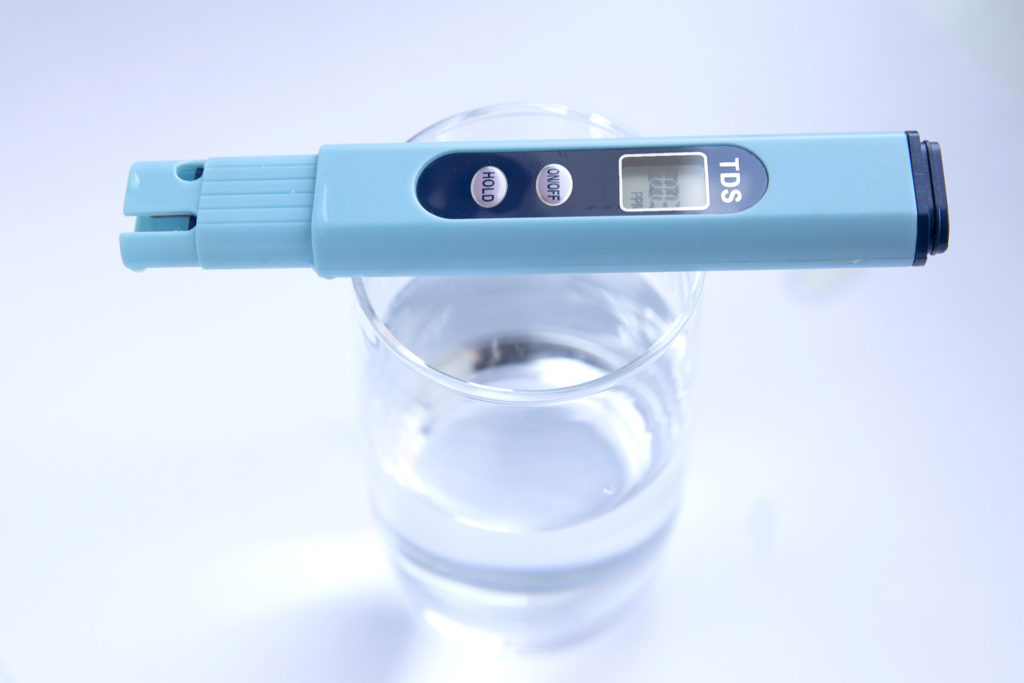
What Is TDS In Water?
The inorganic salt and organic compounds residing in the water contribute to its Total Dissolved Solid level. Common compounds found in water include hydrogen carbonate, magnesium, calcium, sodium, etc. Varying levels of any of these compounds govern water’s TDS level
This blog post highlights the effects of TDS, treatment methods and suggests water purifiers for water with different TDS levels. Follow it until the end for lots of condensed information.
Organic Compounds found in Spring Water
Inorganic Compounds found in Spring Water
Safe Level Of TDS For Drinking Water
Although water has numerous compounds dissolved in it, a certain level of their existence makes water fit for drinking. The compounds constitution in water is measured in PPM (Parts Per Million), and water with a TDS level of at most 300 PPM is fit for drinking (as suggested by WHO standards).
This is not a hard and fast rule as some water can have a higher mineral content such as ROI with an absolutely insane TDS of over 7000, or for a much more commonly found water with a high TDS there is Gerolsteiner with a still quite high TDS of over 2500.
TDS Chart
The chart below depicts the quality of water based on its TDS level.
| TDS Level (in PPM) | Remark |
| 50 to 150 | Drinkable |
| 150 to 250 | Good |
| 250 to 300 | Fairly Acceptable |
| 300 to 500 | You should have this water tested |
| 500 to 1200 or above | Requires a test |
Increased TDS level becomes not only unfit for drinking but also introduces several other issues as follows:
- Poor odor, which might smell like a sewer. A bad odor can cause headaches and uneasiness.
- Unacceptable taste. High TDS can make water taste bitter or a little salty, in some waters this is a desirable trait, in others…not so much. The digestive system might react to such water, which can cause nausea, vomiting, food poisoning, etc.
- Consistently drinking high calcium water is also a primary cause of calcium stones.
- A heavy percentage of organic compounds can make the water hard to digest. Such water may further affect the digestive system.
Acceptable TDs Level For Water
Apart from drinking purposes, water must be inspected for its TDS level for other uses. Avoiding such inspection is dangerous since it may affect the skin, which becomes riskier for people with sensitive skin (especially females).
Is Low TDS Bad?
Since water contains natural elements and low TDS has low natural contents, some people often believe that low TDS is a health risk. The reason is lacking minerals, which makes water almost useless for the human body. However, low TDS isn’t always termed “unfit.”
Why Is TDS So Important?
TDS holds utmost importance since it suggests the naturally occurring elements in the water. These elements supply minerals to the human body. The minerals leave positive effects on bones and result in overall health benefits such as healthy blood, digestive system, nervous system, brain, etc.
Other key benefits are as follows:
1. Taste
A proper TDS level gives the best taste to the water. This helps humans to drink plenty of water since it tastes good.
2. Health
Water with appropriate TDS can provide much-needed elements to the body. Moreover, a high TDS level also indicates toxicity in the water.
3. Hardness
Increased TDS level makes water hard, which results in the disturbed digestive system, dry hair, etc. Hard water also leaves spots on the kitchen utensils, making it challenging to clean them.
4. TDS In Pool Water
Pool owners keep a regular check on the pool’s TDS level to reduce the maintenance and damage to the pool. Moreover, people staying in a pool with high TDS level water may experience skin issues and irritation in the eyes.
How To Treat TDS In Water?
After learning the value of TDS in water, readers should now be taught a few techniques to control it. This section covers that.
- RO (Reverse Osmosis) puts the water under pressure and removes TDS from it forcefully. Synthetic membranes are used to create a high-pressure atmosphere for water, having minute pores (visible through microscope only).
As a result, water is forced to pass through pores no more than 0.0001 microns. The process results in saturated salt and other minerals back while the water is sent to the tank for drinking. RO is suited if TDS needs to be reduced.
- Distillation is the most common method of forcing saturated particles in the water to stay behind while it travels through tube(s) in the form of vapors. Once the water gets transferred from one container to another through evaporation, the resultant is the water with a reduced TDS level.
- DI (Deionization) demands water to be RO treated before being deionized. The RO-treated water is forced to pass through positive and negative electrodes. The positive electrode separates positive ions from water. Finally, after passing through the negative electrode, the water becomes a highly pure liquid, also called “de-ionized water.”
Takeaways
By the end of this article, the importance of TDS and various TDS levels, along with their significance, were covered. For water with a TDS level under 200, a UV water purifier is recommended. However, for water with TDS levels 200-300 and 300-500, a RO+ UV purifier and a RO+ UV+ UF purifier are recommended, respectively.



